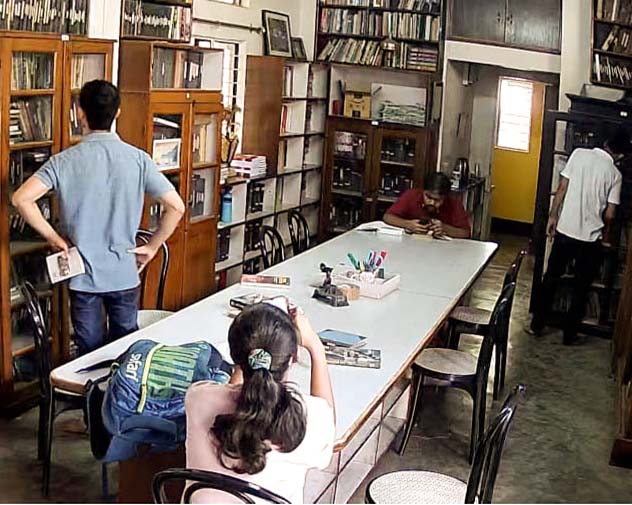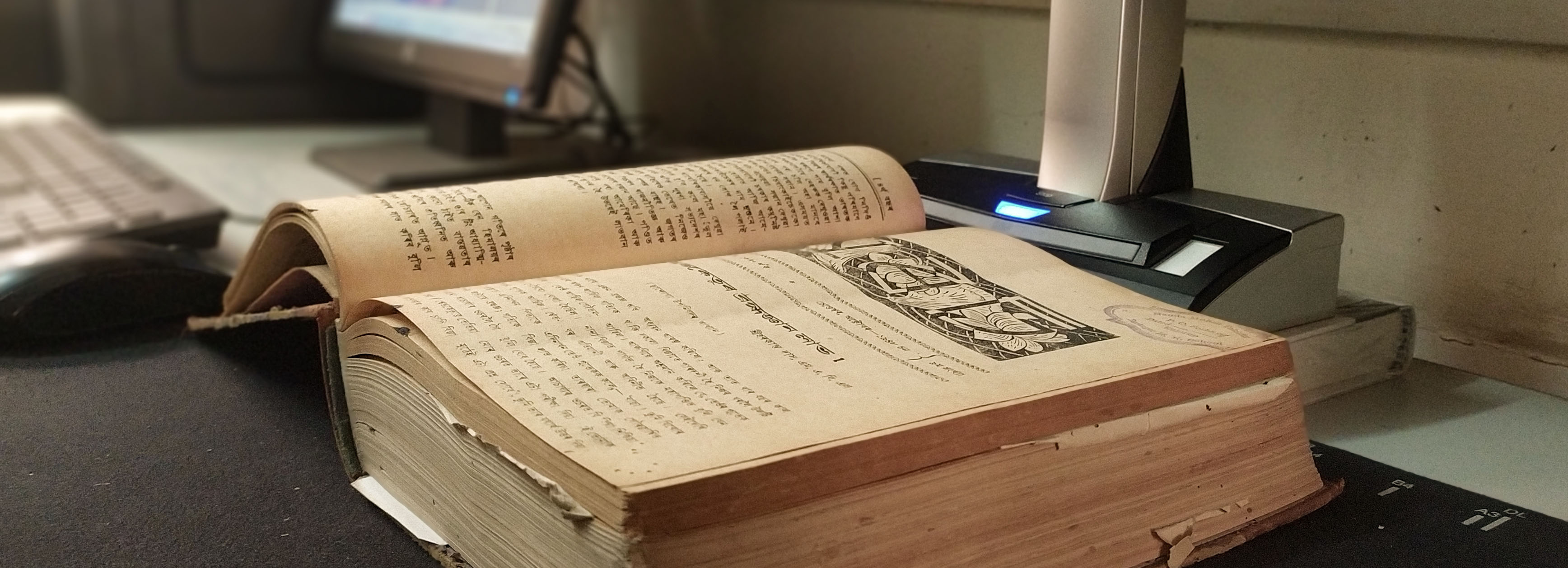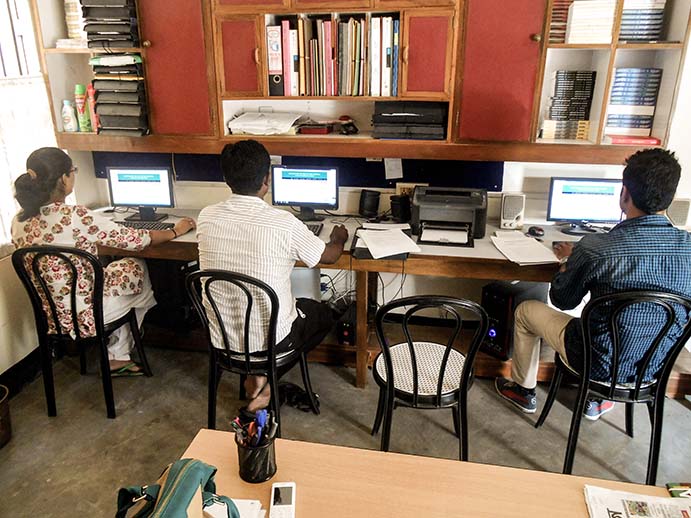CONTEXT
From a modest beginning with making public the personal library
of renowned litterateur
Late Nanda Talukdar in 1996, the Nanda Talukdar Foundation(NTF) has come a long way in
the past 27 years, housing the biggest and rarest collection of Assamese Journals &
Books.
For the history of Assam and Assamese literature, this is
considered one of the final
frontiers. For any serious research on Assamese literature and twentieth century Assam,
the Nanda Talukdar Foundation library is an essential source. The Foundation is the
treasure house of the Assamese literature with materials ranging from the early
nineteenth century to the end of the twentieth century.The Foundation has preserved
documents, journals and books through digitization and other methods of repairmen and
preservation.
The Roots
The entire collection was the lifelong creation of Late Nanda
Talukdar who died in a
tragic car accident in 1983 but his immediate family carried on his work and gave shape
to the Foundation, making it accessible to every researcher of the literature and
history of Assam.
Moreover, in an attempt to revive the reading habit among the
public, the publication
wing of the NTF has been activated as both children's literature, academic
research-based books as well as travelogues and travel handbooks are being published,
besides serious foray into contemporary social history.
With the passing of time and advancement of technology, it has
been decided to preserve
the entire collection of rare books and journals through digitization. The Foundation
envisages the involvement of all willing individuals and institutions in the near future
to make digitization a community project covering every possible rare book
(copyright-free) and journal published in Assam to be uploaded in an open source public
domain.


OBJECTIVES
Digitize rare and
important Assamese books &
journals (copyright free). Store them in an open source public domain for posterity
through a dedicated server.
Make it a community
movement in Assam.
Create a network among
all individual
digitization efforts for the greater reach of resources.
Increase access to
these valuable resources,
preserve them for future generations, using advanced technologies to improve the
digitization process.
PROJECT GOALS
The digitization of rare books and journals is a
process
that involves the conversion of physical copies of these materials into digital
formats, such as PDFs or e-books. This process is becoming increasingly
important as it allows for greater access to these valuable resources and can
help to preserve them for future generations.
One of the main benefits of digitization is that it
allows
for much wider access to rare books and journals. In the past, these materials
were often available only to a few researchers who were able to visit specific
libraries or archives. However, with digitization, these materials can be made
available to researchers and students all over the world through online
databases and digital libraries. This greatly increases the potential audience
for these materials and can help promote greater understanding and research in
various fields.
Another benefit of digitalization is that it can help
to
preserve rare books and journals.
Physical copies of these materials can be
vulnerable to damage from natural elements like light, water, and pests. Digital
copies, on the other hand, can be stored on secure servers and backed up in
multiple locations, reducing the risk of loss or damage. Additionally,
digitization can also make it easier to discover and fix issues like fading or
missing pages.
However, digitization is not without its challenges.
One of
the main challenges is the cost of the process. Digitizing large numbers of
books and journals can be expensive and time-consuming.
In conclusion, the digitization of rare books and journals is a process that has
many benefits such as increasing access to these valuable resources, preserving
them for future generations, and using advanced technologies to improve the
digitization process. Overall, digitalization can be a valuable tool for
researchers, students, and educators, but it is important to approach it with
careful consideration and planning.
THE JOURNEY
1998
The entire collection was the lifelong creation of the Late Nanda Talukdar who died in a tragic car accident in 1983, but his immediate family carried on his work and gave shape to the Foundation, making it accessible to every researcher of the literature and history of Assam.
The entire collection was the lifelong creation of the Late Nanda Talukdar who died in a tragic car accident in 1983, but his immediate family carried on his work and gave shape to the Foundation, making it accessible to every researcher of the literature and history of Assam.
2021
With the passing of time and advancement of technology, it has been decided to preserve the entire collection of rare books and journals through digitization. The Foundation envisages the involvement of all willing individuals and institutions in the near future to make digitization a community project covering every possible rare book (copyright-free) and journal published in Assam to be uploaded in an open source public domain.
With the passing of time and advancement of technology, it has been decided to preserve the entire collection of rare books and journals through digitization. The Foundation envisages the involvement of all willing individuals and institutions in the near future to make digitization a community project covering every possible rare book (copyright-free) and journal published in Assam to be uploaded in an open source public domain.
2022
In 2022, the Foundation digitized the entire journal section of the Nanda Talukdar Foundation, making available 245 journals from 1846-1970 for researchers. From March 2023, the physical access to the journals has been completely stopped in order to preserve the journals.
In 2022, the Foundation digitized the entire journal section of the Nanda Talukdar Foundation, making available 245 journals from 1846-1970 for researchers. From March 2023, the physical access to the journals has been completely stopped in order to preserve the journals.
TIMELINE
It is a 36-month project which commenced on January 2022 and is expected to end by January 2025. In the first phase, the Journals were digitized and subsequently rare books (copy right-free)up to the early 1960s have been sought to be digitized. The entire process is solely for preservation of literary heritage and academic research and there is no commercial interest whatsoever behind the project.
A fully functional Digital Library System would be achieved towards the end of 2024. The project would be wrapped up by establishing a scalable system for future additions and upgradations.
It is a 36-month project which commenced on January 2022 and is expected to end by January 2025. In the first phase, the Journals were digitized and subsequently rare books (copy right-free)up to the early 1960s have been sought to be digitized. The entire process is solely for preservation of literary heritage and academic research and there is no commercial interest whatsoever behind the project.
A fully functional Digital Library System would be achieved towards the end of 2024. The project would be wrapped up by establishing a scalable system for future additions and upgradations.
